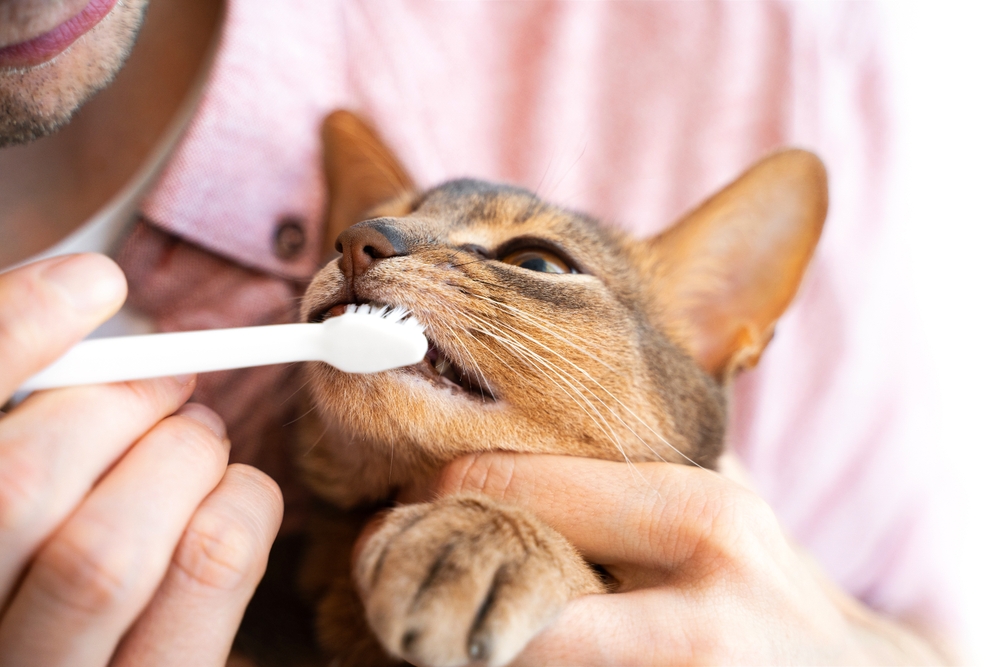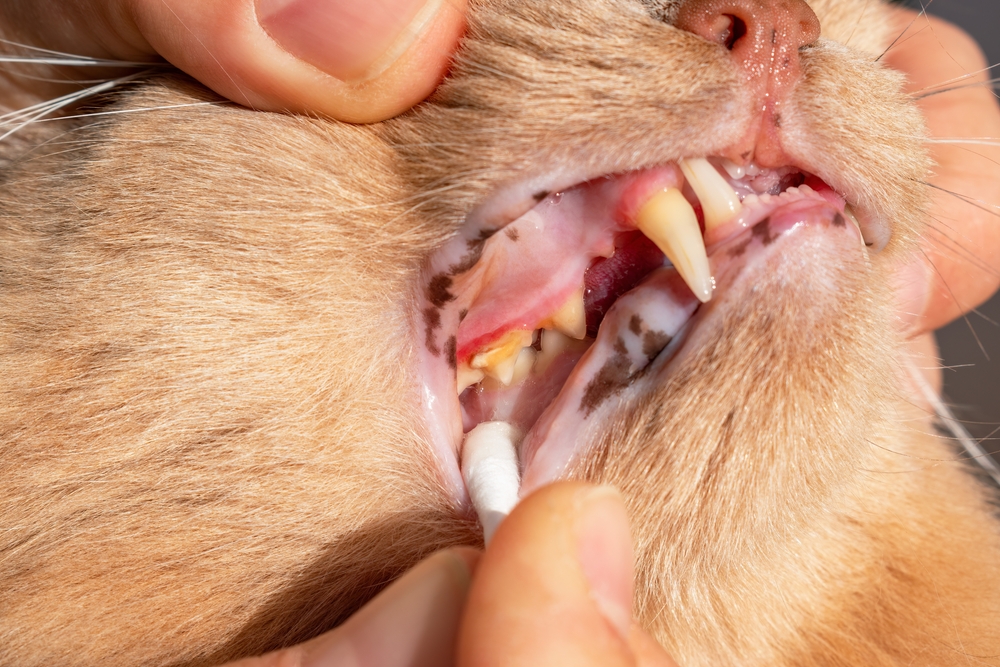Your cat is endearingly independent, so you may not think much about their teeth. However, oral health is essential for your whiskered pal’s overall well-being. With more than 85% of all cats affected by dental disease by age 3, this is a crucial problem to consider.
In addition to gingivitis and periodontal disease, cats can suffer from feline resorptive lesions (FRLs), a painful and progressive dental disease. FRLs, previously referred to as feline odontoclastic resorptive lesions (FORLs), are a common and painful dental condition, affecting as many as 60% of all cats older than age 6. Addressing this issue is crucial because untreated resorptive lesions can cause cats immense pain and discomfort, impacting their quality of life. Advanced resorptive lesions can result in tooth loss and secondary health issues, so you need to be aware of this dental concern and seek veterinary care to ensure your whiskered pal’s well-being. Learn about FRLs by reading our Memorial Animal Hospital team’s guide to this common feline oral health issue.
What are resorptive lesions in cats?
FRLs occur when the outer hard tooth structure—dentin—under the enamel breaks down and the body absorbs it. Over time, the entire tooth is absorbed, which causes significant discomfort for cats, as the sensitive root structures under the dentin are exposed.
Resorptive lesions are divided into two categories based on an affected tooth’s appearance on X-rays. Type 1 lesions show the tooth’s crown is affected, but the root is healthy. Type 2 lesions show on X-ray that the root is dissolving, and it cannot be readily discernible from the bone. Diagnosing the resorptive lesion type is vital for our team to establish a treatment plan for each affected tooth.
Resorptive lesion causes in cats
FRL causes are not entirely understood, but several factors may contribute to this dental issue’s development. Some potential causes and risk factors include:
- Genetics
- Poor diet
- Dental trauma
- Inflammation
- Metabolic disease
Resorptive lesion signs in cats
In general, FRLs are extremely painful. However, cats are masters at hiding their pain, and the condition must reach an extreme level before a cat stops eating. More often, pet owners will see signs such as:
- Swallowing food whole to avoid chewing
- A sudden preference for soft food
- Head tilting while eating
- Dropping food out of the mouth while eating
- Muscle spasms near the mouth
- Pain during an oral exam
Resorptive lesion diagnosis and treatment in cats
Because you may not recognize your cat’s resorptive lesion signs, our veterinarian should perform your whiskered pal’s dental exam at least once annually. If our team suspects that your cat has FRLs, we will recommend X-rays to confirm. When our team detects a cat’s FLR early, we can provide effective and less-invasive treatment, improving their quality of life, so full-mouth X-rays are essential.
Treatment involves extracting the affected teeth during a dental procedure under general anesthesia. While root retention is appropriate in Type 1 resorption, in a more severe Type 2 resorption case, the crown and root both are affected and need to be removed. Our veterinarian will recommend the most effective procedure based on your cat’s diagnostic X-rays. Once these painful teeth are removed, cats usually feel better immediately.
Preventing resorptive lesions in cats

Although FRLs’ exact causes are unknown, the likelihood that your whiskered pal will develop this condition is lower when you take good care of their oral health. To promote your kitty’s oral health, follow these tips:
- Feed a high-quality diet — Some evidence indicates that FRLs may be caused by an overabundance of Vitamin D in the diet. Talk with our team to find a diet that provides your cat with the appropriate amount of vitamin D.
- Brush your cat’s teeth — Daily toothbrushing can help control oral inflammation, which is thought to contribute to Type 1 FRLs. Keeping your cat’s mouth clean will reduce their FRL risk.
- Schedule regular dental cleanings for your cat — A professional dental cleaning is an excellent opportunity for our veterinarian to thoroughly clean and examine your cat’s teeth and assess their oral health, preventing plaque and bacteria from accumulating. Cats with FRLs benefit from frequent cleanings because these procedures slow disease progression and control inflammation and pain.
- Visit your veterinarian once a year — An annual exam is essential so that our veterinarian can detect early dental disease signs. Keeping your cat’s overall health at the forefront can also improve their oral health.
If your whiskered pal exhibits FRL signs, schedule an appointment with our Memorial Animal Hospital team so we can determine the cause of their dental discomfort.






Leave A Comment